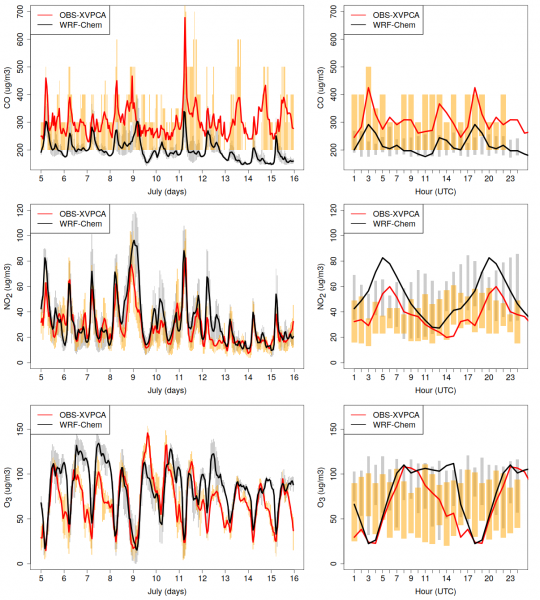Barcelona air quality modeling using WRF-CHEM
30 March 2020We present the first results of a preliminary study aimed to model the air quality over the Metropolitan Area of Barcelona (MAB) for July 2016. The WRF-Chem model is used at high resolution (3km) with a multi-layer canopy model using detailed information (urban morphology). The model results have been compared with the Xarxa de Vigilància i Previsió de la Contaminació Atmosfèrica (XVPCA).
Overall, daily mean and daily profiles surface concentrations for CO, NO2 and O3 are well captured by the model for the period of study. There is a significant underestimation for CO concentrations (50-100 ug/m3). Surface concentrations of NO are in good agreement with the observations although the model underestimates the observed values by 10-20 ug/m3. The model reproduces the concentrations of O3 reasonably well, however, specific periods with a positive bias need to be studied.
Considering these results, we conclude that higher model resolution together with detailed input data (land-use information, urban morphology and emissions) are needed to improve the urban air quality modelling over the MAB. For that reason, future steps are: (1) use HERMESv3 emissions at road level, (2) accurate simulation of biogenic VOCs using the MEGAN model with updated input data (LAI, Plant Functional Types (PFT), climatology, etc.), and (3) run the model with 3 nested domains: 9km, 3km, 1km. Once previous steps are achieved, the study will focus to study how the green infrastructures (in various forms from peri-urban agriculture to green roofs) impact the urban atmosphere (e.g. humidity, temperature, and air quality).
